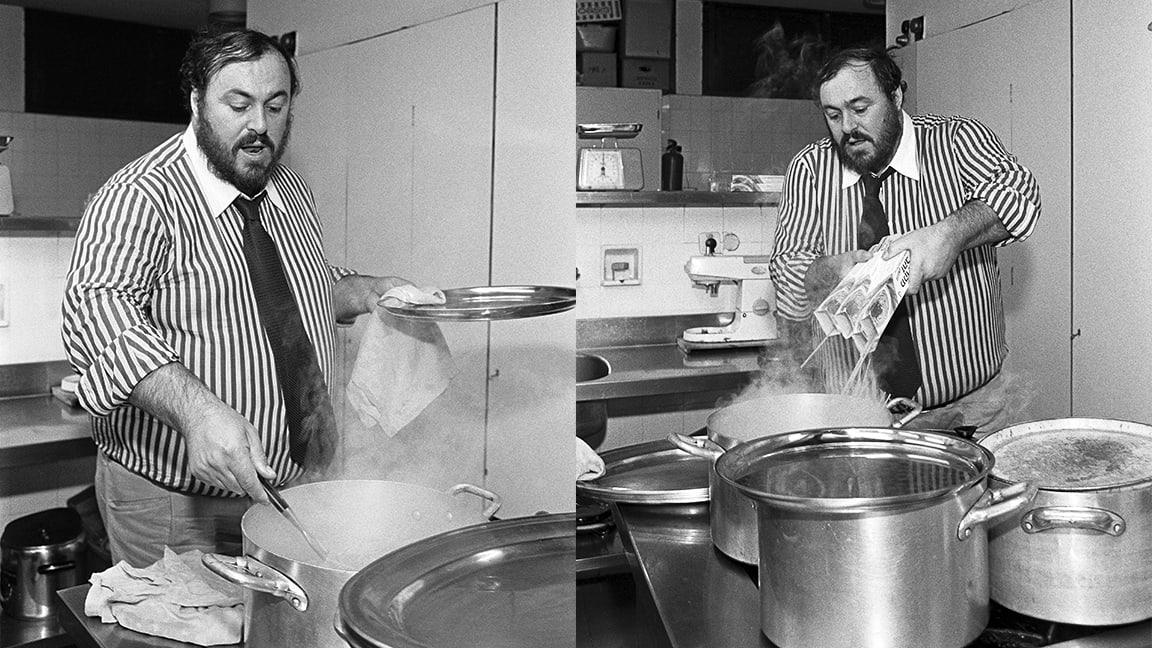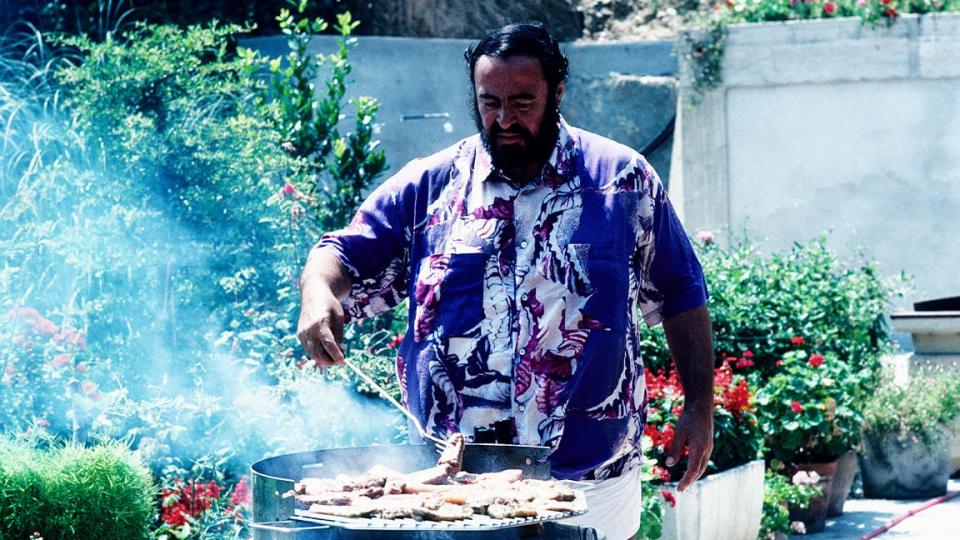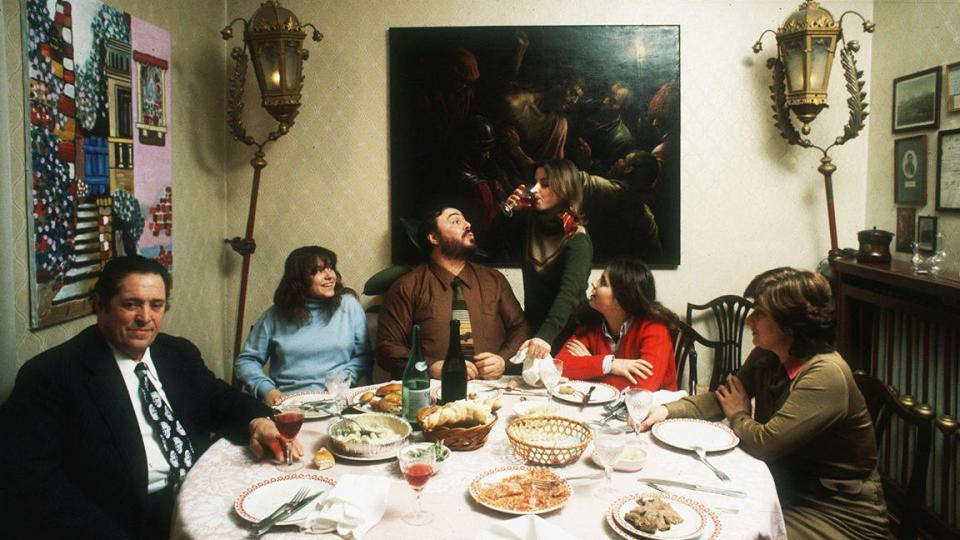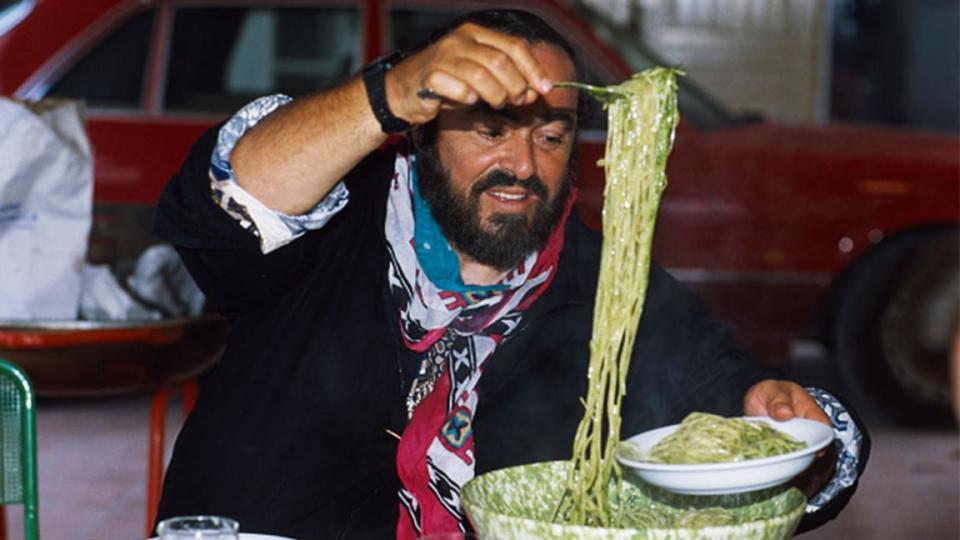Mangia! Inside Luciano Pavarotti’s Italian Kitchen

“There’s one thing I have to say about Luciano’s favorite foods—it’s all about Modena,” Nicoletta Pavarotti tells me on the phone from the very town of Modena, where she shared a home with her late husband and has lived since the great tenor passed away 12 years ago.
Best known to contemporary American audiences for being the set of Aziz Ansari’s Italian adventures in Netflix’s hit Master of None, the gorgeous town, set 26 miles from Bologna in the Emilian countryside, has given the world more than a few wonders: Enzo Ferrari, the founder of the eponymous race car company; chef Massimo Bottura’s Osteria Francescana, one of the world’s best restaurants; balsamic vinegar, not the caramel-infused version but the real deal that takes a full 12 years to mature; and Luciano Pavarotti, arguably the greatest classical singer of the century.

Remembered as the gentle giant of the opera world, Pavarotti was above all a prodigiously gifted musician with perfect pitch and a clear, voluptuously beautiful voice. He skyrocketed to stardom in the early 1970s and, soon afterwards began to advocate for many humanitarian causes.
Along with his friends José Carreras and Plácido Domingo, known as the Three Tenors, he sang in sold-out stadiums all over the world and turned the aria Nessun dorma from Puccini’s Turandot into the closest thing the opera world has had to a hit song in the 20th century.
A major star on all continents (he was the first classical singer to fill concert halls in China), Pavarotti was also a tabloid obsession, both for his love life (his relationship with future wife Nicoletta Mantovani, 34 years his junior, in the early 1990s while he was still married to his first wife was quite a scandal) as well as his remarkable girth and recurring efforts to lose weight.

“One must remember that Luciano went through World War II as a child,” explains Nicoletta Pavarotti. “He suffered from hunger and always remembered those painful years. His humanitarian action—when he was alive and to this day through the Pavarotti Foundation—focused on kids who are the victims of war. Undoubtedly, he kept an appetite and also the desire to welcome people with food, to share what he had. In our house, any guest would be immediately dragged into the kitchen for a bite. It was Luciano’s way to welcome people. And when he cooked, the message was I want to make you, all of you who are gathered around the table, happy.”
Born to a baker and a factory worker, the future tenor grew up nourished on some of the greatest Italian dishes, such as lasagna, tortelloni, and pasta al sugo (the true name of Bolognese sauce, never—locals will tell you with a death stare—to be eaten with spaghetti). The menu usually included Parmigiano cheese and prosciutto from nearby Parma, vegetables from the garden and pasta fresca made by hand every day, and some dishes reserved for special occasions, like tortellini in brodo (in broth) that is traditionally eaten on Christmas. His favorite wine, tasted in childhood as was the custom then since it was considered safer to drink than water, was Lambrusco.
The Pavarotti legend is rife with stories of how he remodeled the hotel suites he stayed in, requesting in advance for the minibar to be replaced with a large fridge and for a professional-grade kitchen to be set up.
His friends would often gift him food, knowing no better way to make him happy. According to a memoir by Pavarotti’s longtime assistant, Edwin Tinoco, pop star Sting once sent the tenor a giant Roquefort cheese. Tinoco also recounts how Pavarotti would travel with provisions, including several pounds of spaghetti and huge Parmigiano cheeses, Teflon pans and favorite wooden kitchen spoons.

As remembered in Ron Howard’s recent documentary about Pavarotti, the singer would cook himself wherever he was staying. “Pasta, always pasta, that was his favorite in any form,” says Nicoletta Pavarotti, adding she and her team “are working on a book of his recipes. He took notes in his agendas. He got very specific with the way he would cook some traditional Emilian dishes. It is extremely moving for me to see his writings, it brings back something of him. And it’s funny too, his playfulness appears clearly in those pages.”
A 1988 New York Times article recorded the maestro’s efforts to keep his weight under control. “‘At 11:45, I make a little veal with vegetables,’ said Pavarotti.‘Then at 3:45 I have a piece of prosciutto. Then at 4:45 a second prosciutto with bread; you need some sugar when you sing. You need the energy. Zap! You cannot be romantic on stage without some sugar.’”
Even on this 1,800 calorie-a-day diet, far from his more regular indulgent practices, Pavarotti sounds remarkably enthusiastic about food. Nicoletta Pavarotti remembers fondly her husband’s ability to find pleasure in every meal. “Luciano was a man of passion, for his art, for his friends, for life in general. He had a great appetite for life, and his love for food was just one side of that. His curiosity, his enthusiasm were that of a child. How wonderful to keep that quality all your life!”
No wonder that Ron Howard, a director whose trademark is an upbeat outlook on life, chose Pavarotti as a subject. To watch his documentary is to whet your appetite for great music but also for the Emilian assortment of pasta and prosciutto, best, of course, accompanied with a glass of chilled Lambrusco.
Get our top stories in your inbox every day. Sign up now!
Daily Beast Membership: Beast Inside goes deeper on the stories that matter to you. Learn more.

